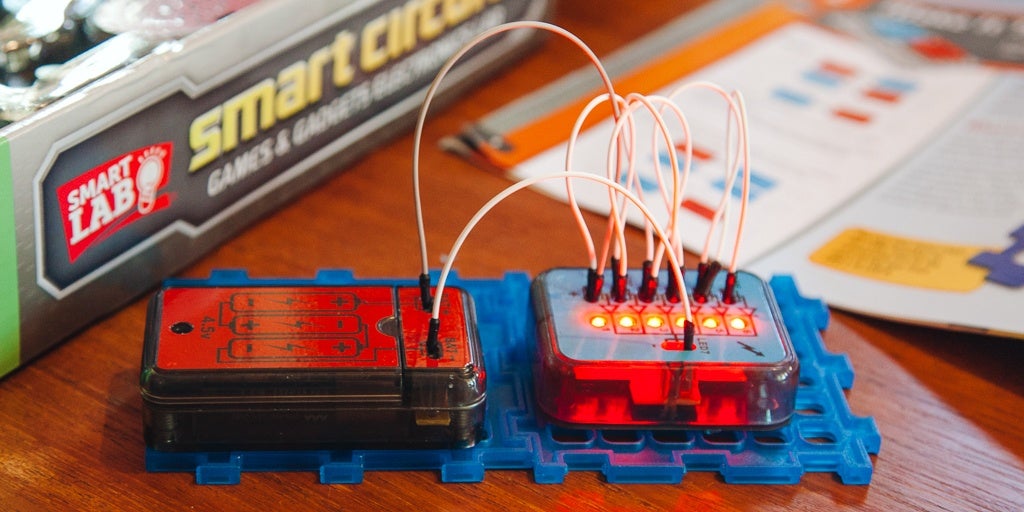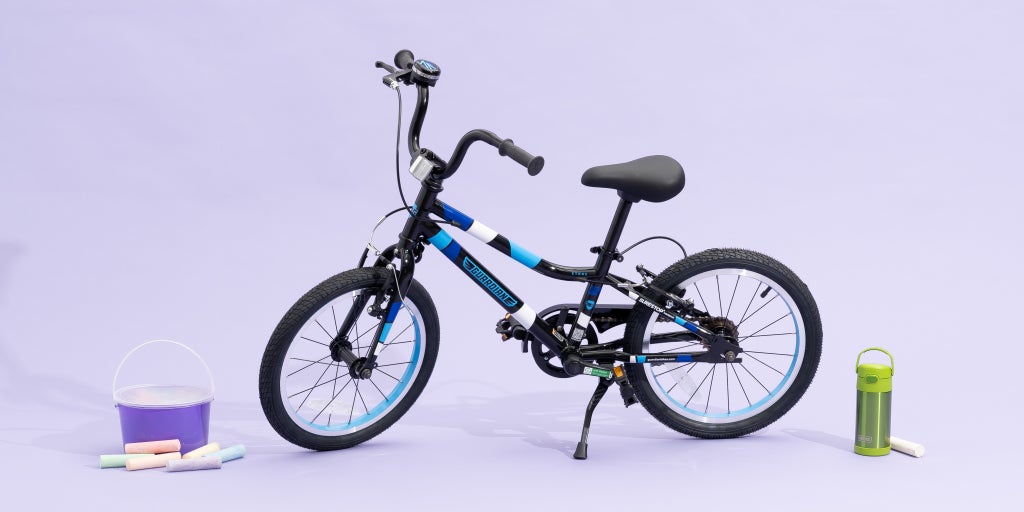An electronics package is a lot more than wires and LEDs; it’s an intro to how everyday gizmos work and a gateway to STEM tasks like design and coding. After examining 13 premier designs with the help of kid testers, we discovered the SmartLab Smart Circuits to be the very best electronic devices kit for youngsters 8 and older (and any individual else) who had actually like to experiment with electronics principles at home. The Smart Circuits kit provides the very best combination of academic directions, user friendly pieces, and fascinating tasks that will certainly get hold of and hold children’ focus.
The Smart Circuits established obtained the most enthusiastic feedback from our original testing panel since the 50 consisted of tasks– whatever from a homemade drum package to a conductivity tester– were easy to put together and fun to make use of. The Smart Circuits instruction booklet is additionally the very best we saw: It strikes the best equilibrium in between providing easy-to-follow representations and providing thorough context, permitting children to develop something quickly or to dig much deeper into the descriptions. The package’s pieces are tough as well, though we are unconvinced of how long the slim connecting wires will certainly last.
If the SmartLab Smart Circuits kit is unavailable or you desire something that costs a little much less, the Elenco Snap Circuits Jr. set is an excellent alternative. Like our major pick, it has easy-to-use pieces and a range of tasks to stimulate beginners’ creativities. You can make a follower fly right into the air to learn more about motors, or make a water detector to recognize conductivity. It’s also suitable with Elenco’s huge and reliable line of Snap Circuits offerings (generally rated for ages 8+, like Break Circuits Jr.), which are easy to tailor to your youngster’s private passions. However its directions are more confusing to comply with and don’t supply the same quantity of context as the Smart Circuits guideline pamphlet, and the majority of the participants in our first testing panel discovered the consisted of tasks to be a little boring. Nonetheless, the items snap together quickly and seem like they are built to last.
Why you need to trust us
When researching this guide, we interviewed 3 experts with experience utilizing electronic devices packages: Jenny Young, that possesses the Brooklyn Robot Foundry makerspace and leads building camps for kids; Sandra Oh Lin, founder of KiwiCo; and Amy Parness, founder of Sparkle Labs. We also had children ages 7 to 12 test our faves.
I’ve invested the previous years covering maker modern technology– every little thing from 3D printers to robotics sets to blowpipes. I’ve chronicled the increase of modern-day electronic devices kits developed by startups and Kickstarter-backed groups many thanks to a significant drop in costs for elements like microcontrollers and sensors.
Trying to find something else?
A stylized picture of adult-sized hands holding out a box to a set of small, child-sized hands.
Just How to Choose Children Gifts With Enduring Value
Colorful STEM toys on a grey surface.
Learning Toys and STEM Toys We Love
Illustration of a vampire with pockets in their spread wings, full of a few of our preferred Halloween devices.
Our Fave Equipment for a Tricked-Out Halloween
A forest with several log cabins positioned near each other like at a summer camp, with some hammocks in the foreground.
What to Load for Summer Camp
Find out more from Gamings and hobbies
That need to get this
An electronic devices package must be a staple in the toy chest of any type of school-age youngster because of how much it can educate about structure and technology, however a youngster with a budding interest in STEM subjects is one of the most likely to return to them over and over. Unlike robotics packages that focus on building, coding, and top-level robotics topics, electronic devices packages use an economical means to learn the essentials of working with electronic devices: Youngsters will certainly be able to discover the different elements of a circuit card and create a basic understanding of what it takes to build an electronic device. A child most likely won’t continue to make use of the exact same set for many years, yet instead will utilize it as a springboard to proceed to much more complicated electronics function.
In this guide, we concentrate on packages that must attract children ages 8 via 12, though you can locate electronic devices packages suggested for children of just about any type of age, and because every kid is different it’s up to moms and dads to examine their youngster’s capability and passion. Electronic devices sets don’t necessarily discover as playthings, which implies it could take some support to persuade a kid to pick one up for the very first time. Kids ages 6 to 8 may still locate the sets fascinating, however they will require some help from a moms and dad to get the most out of these packages. And though several of the packages we looked at might interest adults also, bear in mind that they are actually meant for kids, with bigger parts to make working with them less complicated for tiny hands, for instance.
Anyone using an electronics set needs to review the instructions to assemble their very first jobs, otherwise the end result is unlikely to function as meant. The children we dealt with– who were between 7 and 12 years old– practically generally begun by dabbling without reading any directions. While some gave up when they found their task didn’t function, others understood they needed to turn to the instructions. If you are a moms and dad and your child is likely to quit, you’ll either require to step in and aid or reassess purchasing them an electronic devices kit.
It’s feasible to find electronics packages that use genuine electronics parts (the Adafruit TV-B-Gone, which assists you develop a remote that can switch off virtually any type of TV, is a personal favorite), however they’re more appropriate for teenagers and adults who can safely make use of a welding torch. For youngsters, we prefer packages that trade out actual electronics parts for modular pieces that snap together. They’re less complicated and much safer to make use of yet can obscure what’s actually taking place. Building anything at all still has an instructional element, so you’re not burglarizing a kid of learning something by acquiring these sets; rather, they might coax a child to play that otherwise may neglect a more academic set altogether.
None of the kits in this overview need programming expertise or lengthy, engaged structure. If you have an interest in that degree of playthings, read our robotics set overview.
Exactly how we picked
While searching for electronic devices kits to test, we read testimonials on Amazon and overviews from Wired, education and learning internet site Fractus Knowing, and moms and dad tech blog site Code Mother. (The site is no more up, but an archive of it still exists.) We additionally interviewed our experts on what to search for in an electronic devices set.
A number of categories of sets arised during our study: sets that include an academic curriculum developed to assist individuals through the essentials of electronic devices work with straightforward projects such as making a buzzer audio or light turn on, and packages with little context in their directions that focus extra on an enjoyable result. We also took into consideration single-use kits against open-ended packages, which permit you to make real creations by integrating a package’s items with day-to-day things you currently have in your home, like paper and Legos.
Although we such as all of the categories of packages for various factors, this guide is focused on novices. We believe that parents that are unsure if their youngster will certainly take to electronics function need to begin with something affordable prior to purchasing much more pricey advanced choices. Despite which price variety you’re considering, we assume the best sets have the following attributes:
Interesting jobs: The consisted of items ought to be enough to create engaging contraptions that leave the building contractor intending to try a lot more. It should be possible to use the package to complete several things, such as creating sounds and lights or perhaps building fundamental however usable gadgets, like an alarm.
Motivates creative thinking: The package ought to permit you to relocate beyond the suggested tasks to construct your very own designs. This can be a result of clear instructions that develop a solid understanding of just how to make use of the items by yourself, or the ability to incorporate added creative elements like paper and Lego bricks.
Durable elements: The items should be well-constructed and last with several builds.
Just how we tested
Making use of the above criteria, we chose 6 packages to check in 2021: the Sphero LittleBits Home Learning Beginner Set, Circuit Scribe Super Kit, Squishy Circuits Deluxe Set, Thames & Kosmos Easy Electric Circuits, Playz Circuit City, and KiwiCo Slime Circuits In 2018, we examined the LittleBits Celebrity Wars Android Developer Kit and Circuit Cubes Whacky Wheels against our leading choice, the SmartLab Smart Circuits, in a class of 16 fourth and fifth. We carried out an initial round of tests in 2017, when we contrasted five kits with the help of a panel of 4 kids, ages 7 to 12, and one mom.
We evaluated just how well each set’s directions described the actions to construct each task. We also thought about the educational value of the guidelines and if they had the ability to hold the home builder’s attention. Throughout our screening panels, instructions that were as well dry and wordy caused children to really feel overwhelmed or to weary; in our first round of testing, they sometimes asked an adult to complete the remainder of the job or wandered back to a various set. Instructions that were interesting however not really educational often held the youngsters’ interest yet really did not provide a clear photo of what they were doing– or led to freeform having fun with the kit. Freeform play is an advantage when a kid understands what they are doing, but if they don’t find out the basics of using a kit, their play won’t result in something that functions, which can make them lose interest quicker. In the class, lots of teams begun by creating pieces in manner ins which looked fascinating, and then hesitated to take them apart to start over when they discovered they didn’t work like they expected. We located that the most effective sets struck an equilibrium in between education and learning and enjoyable, holding kids’ focus while walking them through how to make use of the set.
Throughout testing, we noted the variety of included jobs and exactly how interesting it was to construct them. We searched for kits that allowed us to do a series of things as opposed to just duplicating comparable tasks over and over. We additionally kept in mind of which packages made it the most convenient to create our own creations, which is generally a result of pieces made with clear purposes, or instructional motivates that recommend methods to integrate imagination. Ultimately, we considered the longevity of each package’s components and if extra materials were needed.
Our choice: SmartLab Smart Circuits.
The SmartLab Smart Circuits set offers the most effective general experience for complete beginners who intend to begin dealing with electronics and want to read comprehensive directions. It’s advised for ages 8 and up, yet we think older ages or concentrated children will do far better at complying with the curriculum. The package’s directions are the very best we attempted because they incorporate an academic curriculum with easy-to-follow steps, permitting you to discover everything about a project or to simply start developing based upon the aesthetic representations. Its 48 pieces also snap together easily to make straightforward but imagination-sparking productions.
The Smart Circuits guideline booklet is structured as an educational program that explains the elements of the package before walking you through progressively complicated jobs in which the ideas improve each other. The booklet is colorful and set out well, and each project has a layout that demonstrates how to link the items. The mama on our examination panel suched as the choice to first follow the diagram revealing where to position each cord and then review the comprehensive summary of the job for further context. 3 of the four child testers in our first panel liked this package the best. Although they could not pinpoint specifically what regarding the directions attracted them, the guidelines’ clearness was evident in just how promptly the kids were able to start constructing and completing jobs.
The instructions cover 50 sample tasks– half the number of our runner-up pick, however sufficient for approximately two and a fifty percent hours of building time. The jobs we tried took the children in between 15 seconds (to develop an easy circuit) and 4 minutes (to construct a button). These times really felt short, yet the children on our initial test panel liked exactly how quickly they could move in between tasks. They were concentrated on getting a result– and having the chance to have fun with that result– so the much more finished jobs, the better. The projects educated kids concerning electrical existing, conductors, light waves, and extra.
After finishing the Smart Circuits educational program, children need to comprehend sufficient to make their very own creations with no directions. It takes some creative imagination and a real grasp of exactly how each component works, but interested and determined youngsters will certainly have the ability to stay involved after the preliminary tasks are complete. They may pick to make paper or cardboard crafts to augment the set; the light-up module could come to be a robotic’s glowing eyes or the taillights on a car.
Every little thing you need to begin constructing with Smart Circuits is available in the box with the exception of batteries. The set includes modular pieces (a battery holder, push buttons, an LED range, a microprocessor) that break onto the set’s six gridlike boards, and 31 cords for attaching the modules in different configurations. Though the cords really did not always connect to the modules quickly, our first round of testers liked collaborating with them because they resembled real electronics elements. The components themselves really felt strong and were clearly noted with their function, just like the items in the various other electronics packages we attempted.




